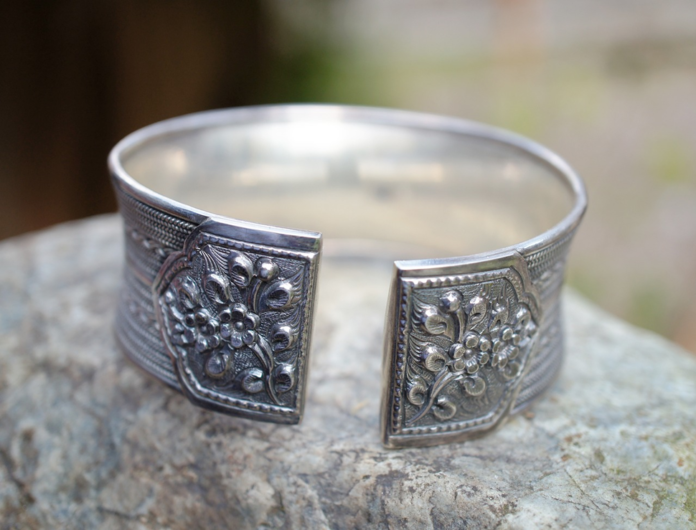Sterling silver is a durable yet affordable precious metal that is commonly used in jewelry fabrication. However, with imitations flooding the market, it can be difficult to distinguish genuine sterling silver from plated or mixed metal alloys at a glance. In this article, we will explore 7 tried-and-true testing methods you can use at home to determine if that piece is authentic sterling silver. From checking stamps to acid tests, these proven techniques cut through deception to verify quality and composition. Understanding these simple tests empowers consumers to make wise purchasing decisions and properly care for valuable silver collections.
1. Check The Stamp/Maker’s Mark
One of the easiest ways to identify genuine sterling silver is by checking for the maker’s stamp or hallmark. A legitimate sterling silver piece will be stamped with “.925” indicating it contains 92.5% silver with the remaining percentage comprised of other metals like copper for strength. Be sure to examine the stamp closely under magnification, as fakes may try to pass off similar-looking marks. Also, search for the manufacturer’s logo or initials as further proof. An authentic stamp eliminates any doubts about a piece’s sterling credibility.
2. Apply The Magnet Test
Magnets will be attracted to alloys containing nickel or other base metals, but not to sterling silver. Hold a strong magnet against all surfaces of the item in question. If the magnet does not stick at all and quickly falls away, it’s a good sign it’s solid sterling. Be aware that some sterling silver jewelry may contain small magnetic clasps or embellishments. Check the main body and interior of the piece thoroughly to rule out any attraction. The magnet test is an easy first indicator of genuine sterling composition.
3. Take Note Of Weight And Feel
Sterling silver has a density and weight that is heavier than lower-quality base metal alloys. In your hand, sterling silver should feel denser and weightier than plated or mixed metal pieces. Weigh an item on a high-quality jewelry scale to compare it with a known sterling piece. Also, take note of whether it feels overly light or has obvious hollow or lightweight areas that suggest low silver content fillings or platings. The heavier heft and solid feel of pure sterling silver is unmistakable with assessment.
4. Try A Chemical Spot Test
A chemical spot test is an effective, fool-proof way to reveal a metal’s true composition chemically. Drops of acid or silver testing solution are applied to an inconspicuous area to observe any reaction. For example, sterling silver chars turn black when nitric acid is applied. No reaction or alternate colors indicate questionable silver content. While messy, these tests provide concrete results to verify even deceptive appearing pieces. Silver testing kits can be purchased cheaply online to avoid guesswork.
5. Examine Inside Stampings
Many sterling pieces have maker’s hallmarks stamped inside where they cannot easily be seen externally. Use a magnifying glass or small mirror to inspect interior surfaces and crevices for manufacturer hallmarks. Examining stampings out of plain sight offers additional authentication that fakes are unable to duplicate. Be thorough in scrutinizing interiors and tiny crevices like underneath bezel settings for confirming marks.
6. Study Solder Lines
Sterling silver is handled in a way that requires strong solder lines between components. Real sterling pieces will have well-defined, smooth solder lines contrasting the item’s pure silver color. Alternatively, sterling silver charms for charm bracelet may feature intricate stamping or engraving work too fine for fakes to imitate genuinely. With magnification, closely analyze soldering, stamping details, and overall craftsmanship for further honest assurances.
7. Check For Plating Peeling
If plated with a silver-colored coating over a lower-quality alloy, wear may cause the plating to peel or flake over time exposing patches of non-silver metal below. Gently file or rub suspect areas with a polishing cloth to check for base metal colors emerging from below. Ruling out lifting plating indicates the likelihood of true sterling content and precisely blended silver alloy.



